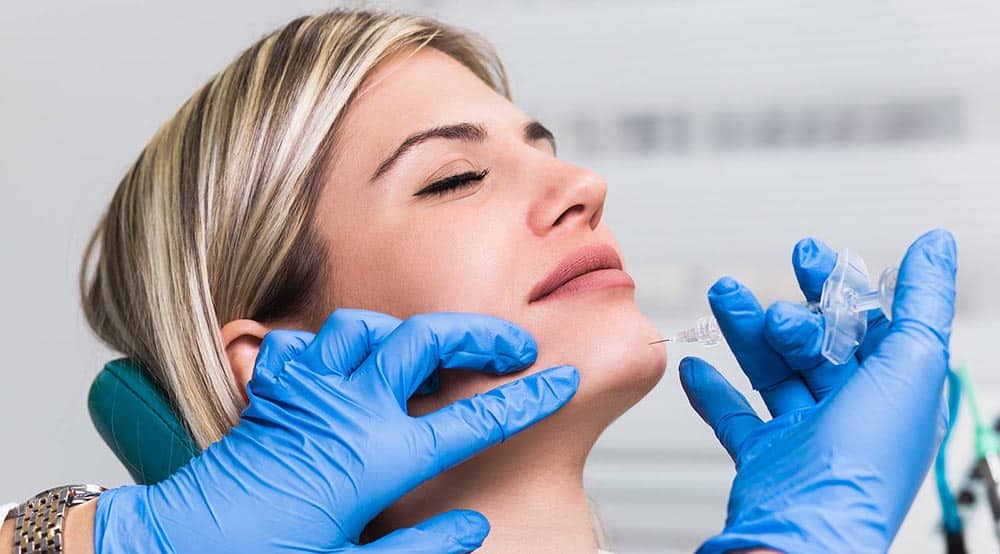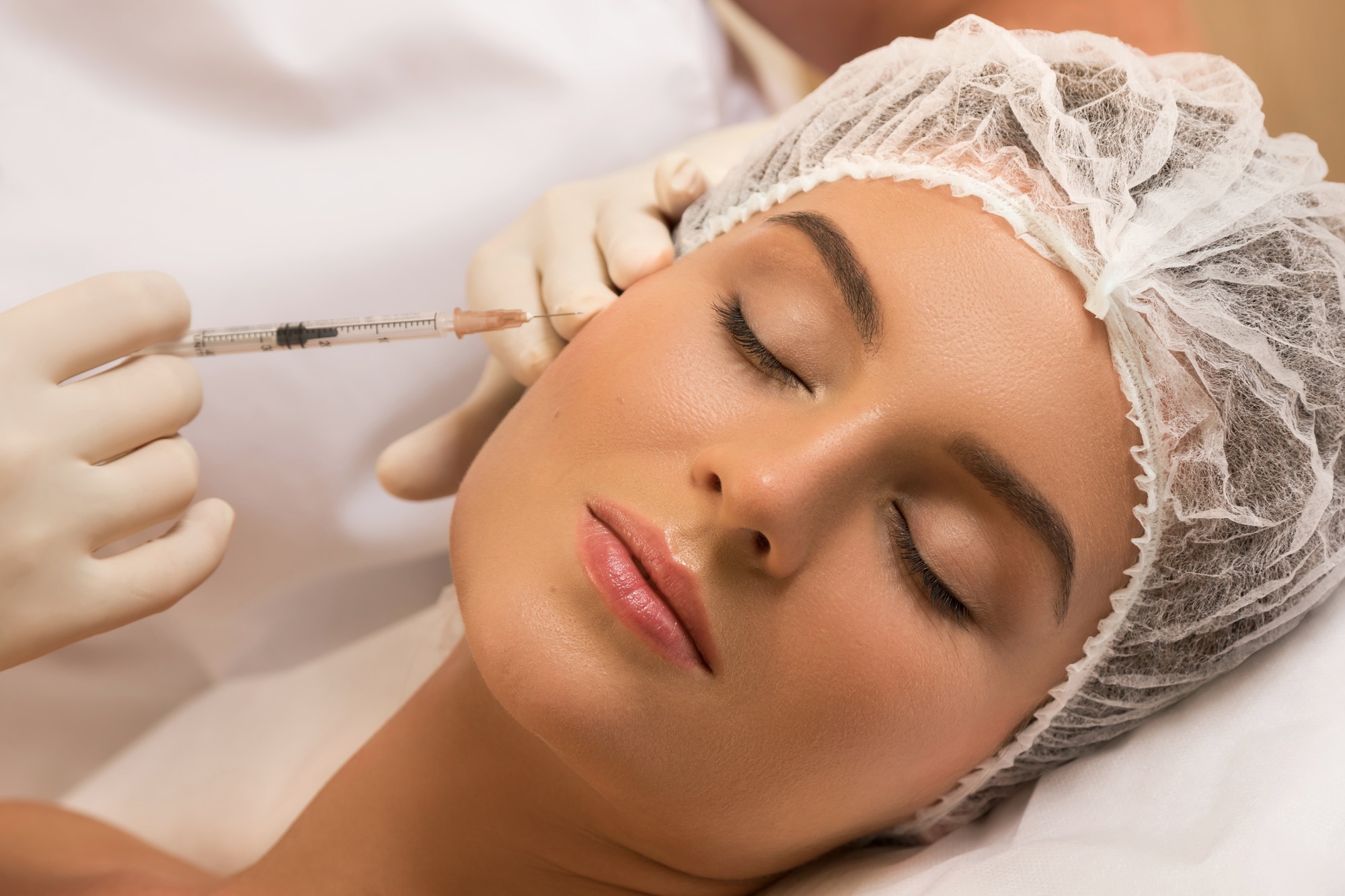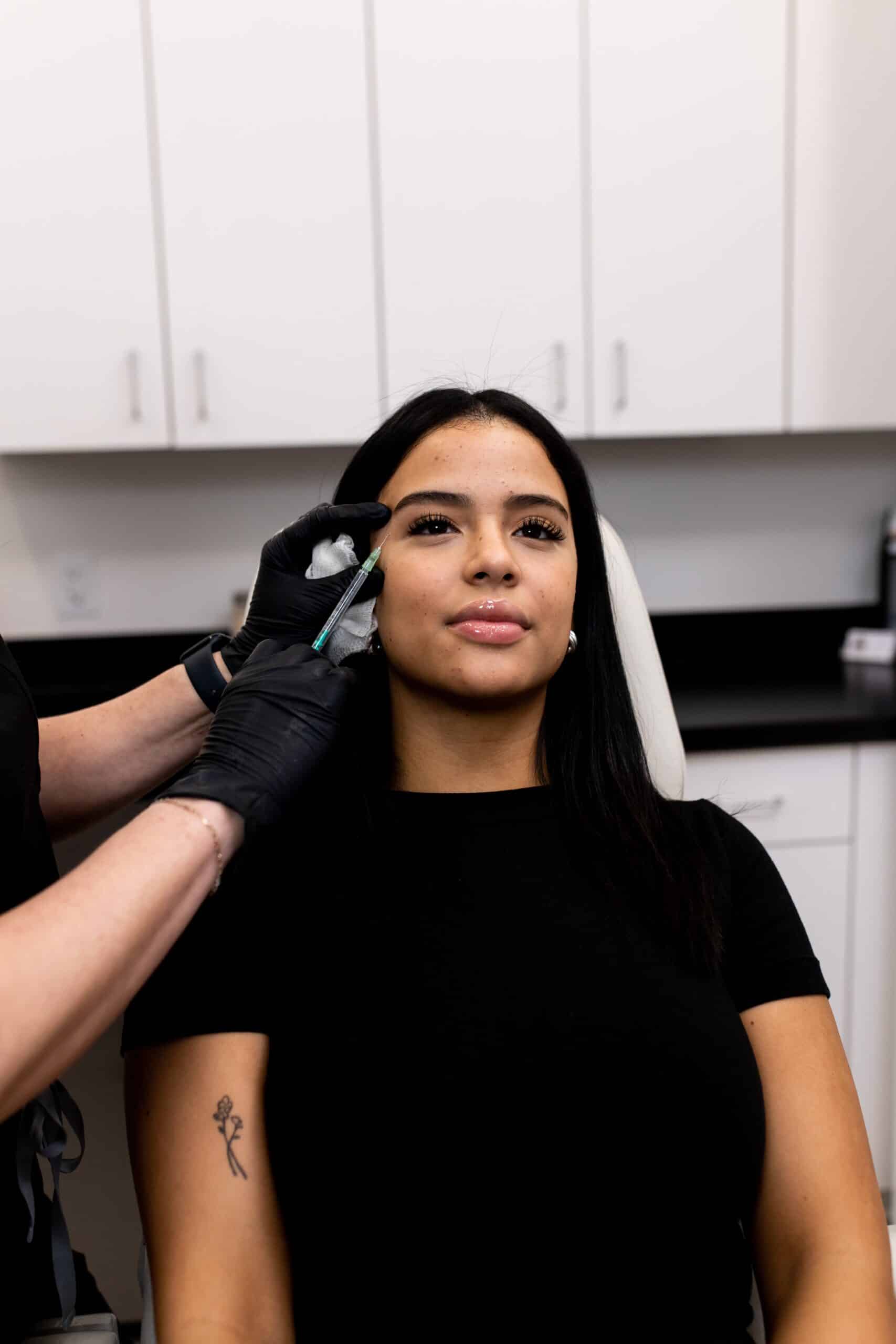What are dermal fillers?
Dermal fillers are cosmetic fillers injected to add volume and/or fill deep wrinkles.
What are fillers made of?
Dermal fillers are soft gel-like substances. All FDA-approved dermal fillers have the same parent chemical, hyaluronic acid. Hyaluronic acid is a naturally occuring substance in the body, so it is very safe to inject. Another benefit of Hyaluronic Acid, or “HA,” fillers is that they are completely dissolvable. If the patient or injector isn’t happy with the filler, an enzyme called Hylenex is injected, which dissolves the filler within 48 hours.
Are fillers and Botox the same?
Fillers are not the same as Botox! Botox is most commonly injected to smooth wrinkles on the forehead, between the brows, and around the eyes. Botox is a neuromodulator that’s injected into muscles. It works by relaxing the wrinkle-causing muscles. Fillers are not injected in the muscles. Instead, they can be injected deep, in fat pockets or near bone, or superficially, just under the skin. Fillers add volume under the skin, which plumps and smooths the surface of skin. So, fillers and Botox ultimately both smooth the surface of the skin, but they are formulated and injected much differently.
What are the different types of fillers?
There are two major families of filler: the Allergan fillers and the Galderma fillers. Allergan fillers include Juvederm Ultra, Juvederm Ultra Plus, Volbella, Vollure and Voluma. The Galderma fillers include Restylane, Dyfyne, Refyne, Kysse, Lyft, Sylk, and Sculptra. We also inject Revanesse Versa and Radiesse fillers. They all have a slightly different “G-prime” which measures elasticity. Fillers with a low G-prime are soft and squishy. These fillers are great in areas like the mouth or lips where there’s a lot of movement and we desire a flexible filler. Fillers with a high G-prime are firm and have more lift. These are injected deep, near bone. A high G-prime filler is great for enhancing bone structure and filling cheeks.
Who injects filler?
Dermal fillers are most commonly injected by Plastic Surgeons and Nurse Injectors. Under a medical director, Estheticians can also inject fillers. Healthylooks’ founder, Dr. Jerome Lamb, is a Board Certified Plastic Surgeon and our lead injector. He has written a medical textbook on facial anatomy and his injection techniques. Dominique Cardello, RN is our nurse injector. Dominique trained in Chicago as well as under Dr. Lamb, and she specializes in lip filler at Healthylooks Medspa.
It’s very important to see an experienced injector that has a strong understanding of facial anatomy and the potential risks of dermal filler. We recommend visiting a Board Certified Plastic Surgeon or a Nurse Injector with a Plastic Surgeon Medical Director.
Do filler injections hurt?
When injecting in the midface, Dr. Lamb first injects a dental block, which numbs the cheek and mouth area for about 2 hours. Before injecting in the lips, patients numb with a chilling tool. We also provide pro-nox which significantly helps with pain and/or anxiety associated with needle injections.
How long does filler last?
Fillers take about 5-10 minutes to inject. Depending on the type of filler injected, results can last 1-3 years. Typically filler around the mouth wears off in about 1-1.5 years, while filler near the cheek bones lasts around 2-2.5 years.
Call or text 816-795-5262 to schedule a filler consultation with Dr. Lamb or Dominique!





